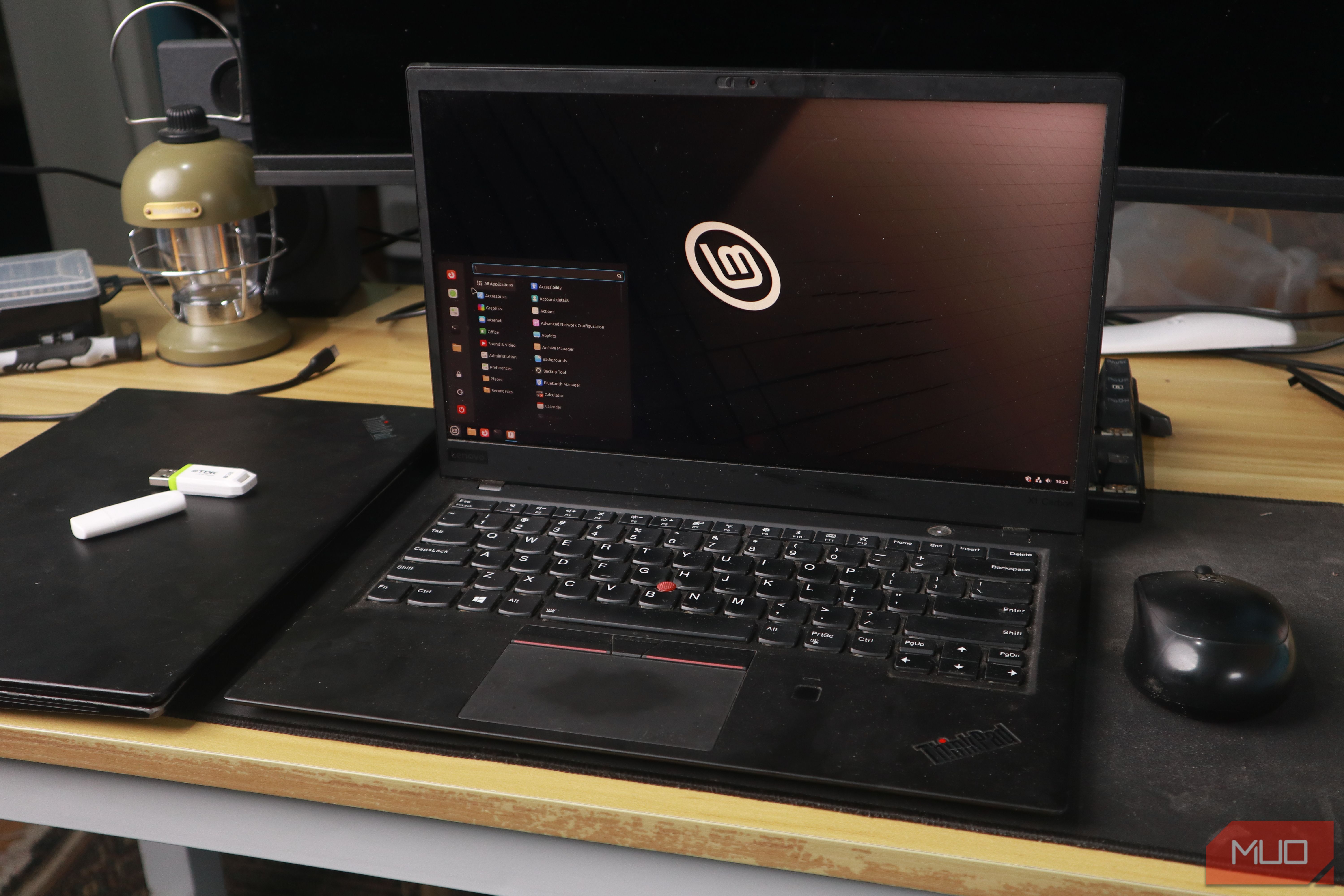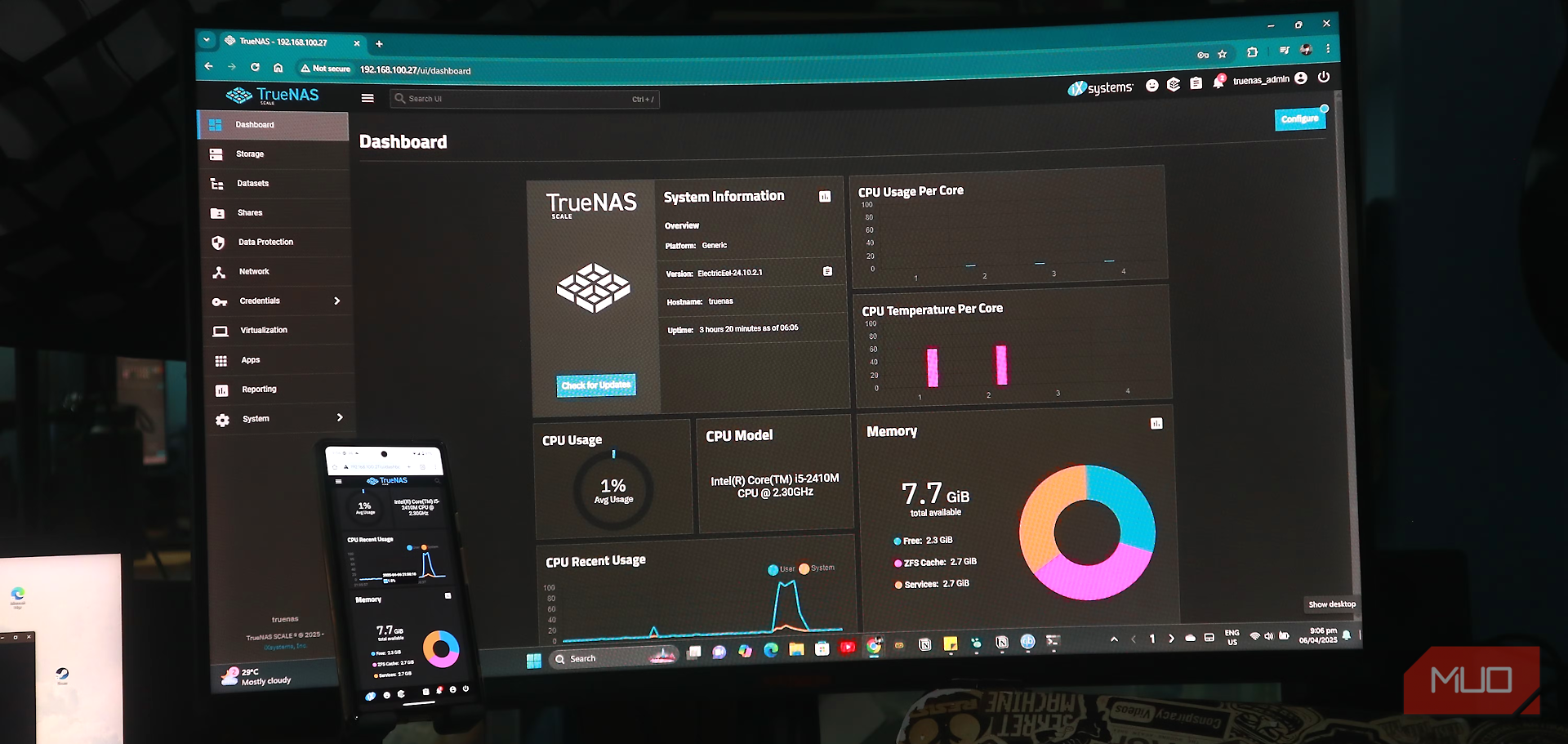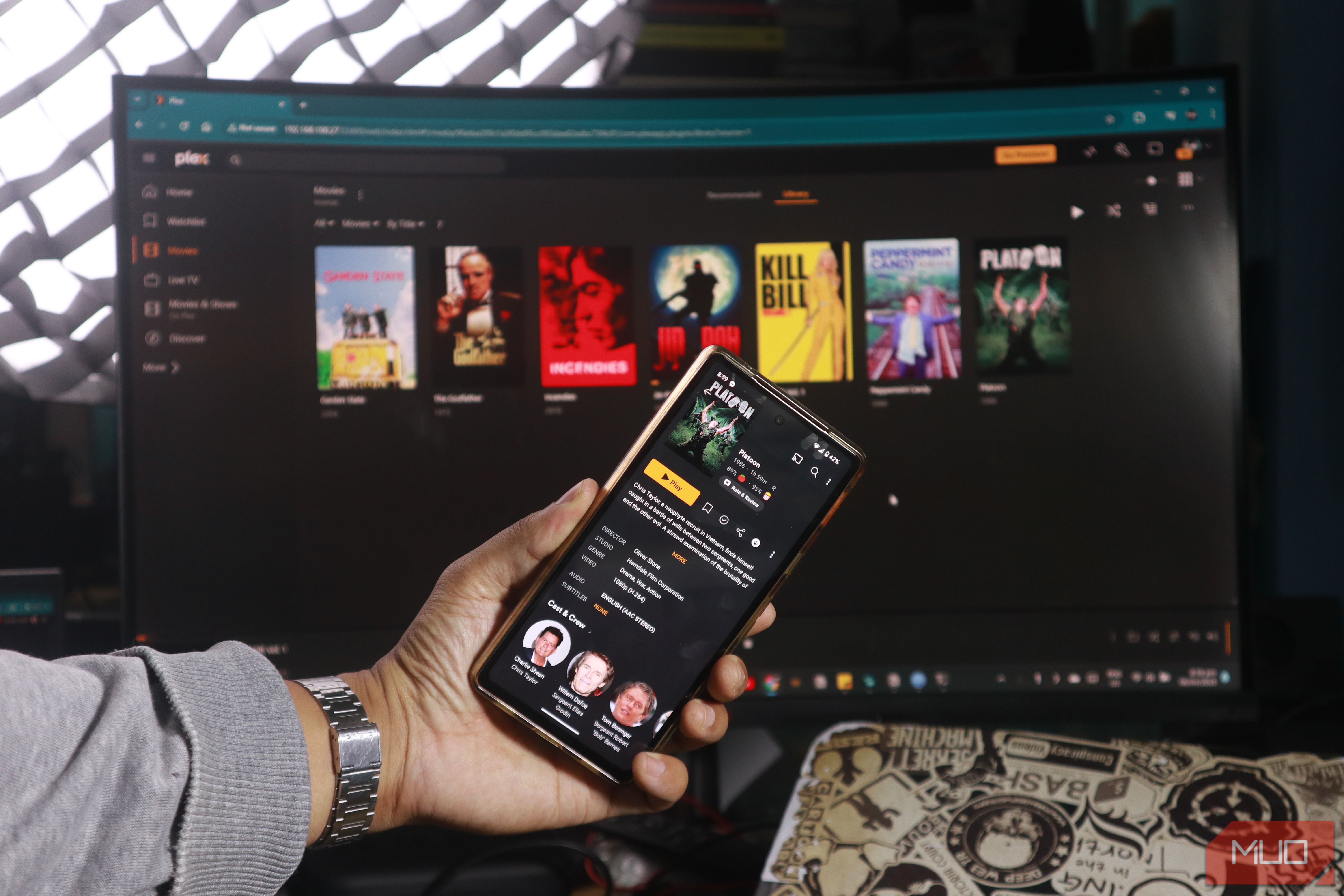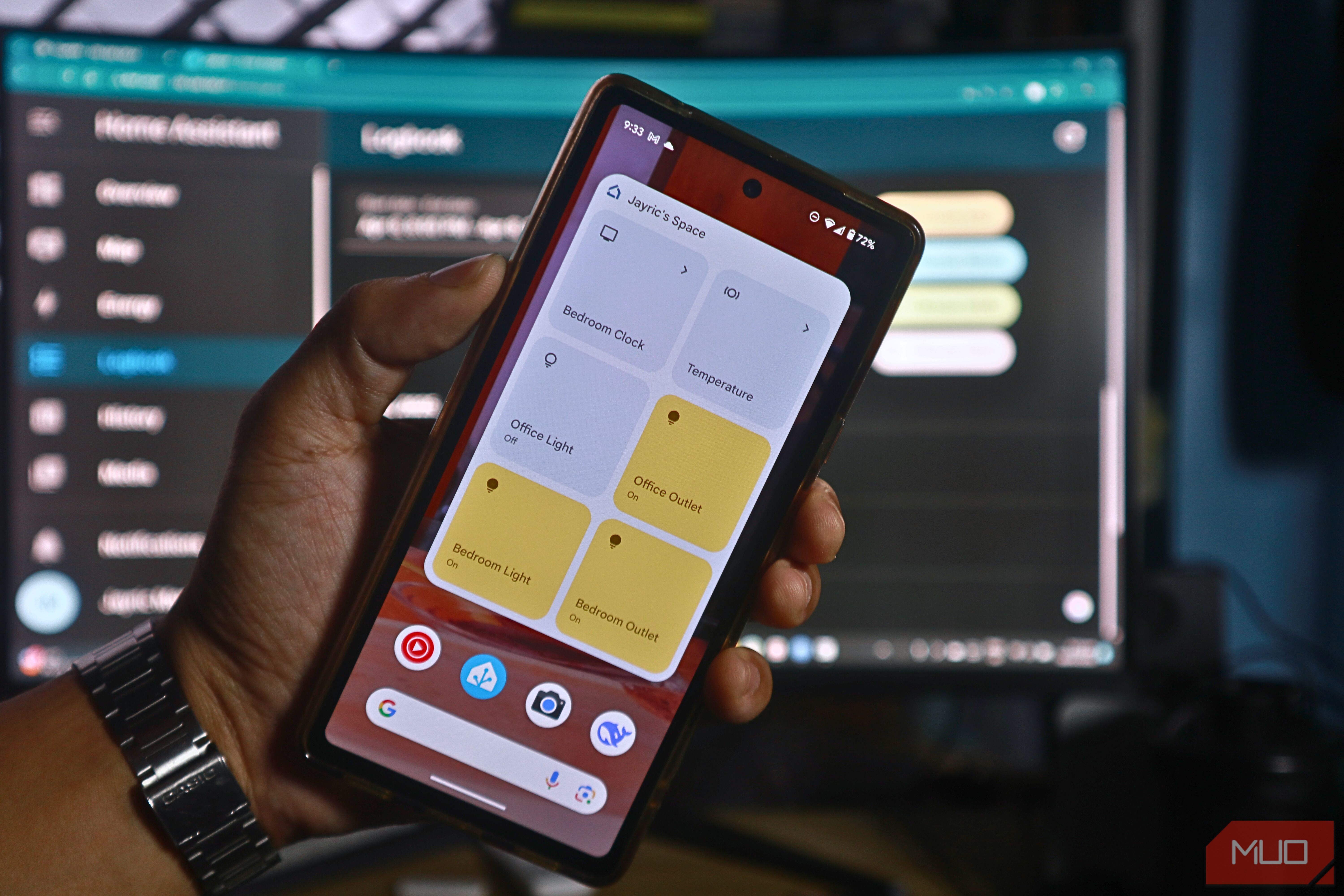Repurposing old laptops not only reduces electronic waste but also unlocks a world of practical applications. Better still, there are heaps of ways you can put your old laptop to use, giving it a new lease of life and saving it from the scrap heap.
5
Dedicated Linux PC
Once an old laptop feels too sluggish to continue running Windows, I always turn to Linux to bring it back to life. Even on a decade-old machine, Ubuntu runs fine on my barely functioning device. And despite the memes about Linux distros, I actually find the UI sleek and user-friendly. Linux drivers work most of the time, and I don’t have to use the terminal if I don’t want to.
After installing Linux, the performance boost becomes immediately apparent. My newly revitalized machine now serves as my secondary computer for tasks like coding, web browsing, and online learning. Aside from the typical things you do with a PC, a Linux machine can also become an effective learning tool. I’ve learned terminal operations, file management systems, permissions, and general system administration by using this device almost daily.
Beyond its practical uses, I think one of the appeals of Linux is that being a user becomes a hobby in itself. Once you start dabbling with the terminal, you’ll begin learning new skills previously hidden from you on Windows and macOS. You’ll soon want to customize your setup, optimize your system, and find the best packages—and before you know it, you’re fairly proficient with Bash and in on all the Linux inside jokes running through the community.
Just like any hobby, you’ll find a large community actively sharing ideas, guides, builds, and all sorts of cool tech discoveries across the internet. There are just so many things to love about Linux!
4
Build a Network Attached Storage
Reviving your unused laptop into a personal NAS (network-attached storage) is both a fun and practical way to reuse an old device. What’s great about a laptop NAS is that you already have most of the necessary components: a capable processor, built-in storage, and networking capabilities. Plus, using a laptop also gives you a built-in battery backup and compact design, perfect for tight spaces or power outages.
With my makeshift NAS, I can now skip my Google One storage subscription and host my own personal cloud storage. It saves me money and allows me to take more control over my personal privacy and security since everything stays local and encrypted.
I built my NAS on an old Dell Latitude Slim laptop with a 2nd-Gen Core i5 and 8GB of RAM. The only thing I changed was the storage drive, which I upgraded with a 1TB 2.5-inch HDD I had lying around. It wasn’t hard to turn my old laptop into a NAS. I installed an open-source OS called TrueNAS, set up network sharing, and organized the storage into folders for backups, media, and files.
I still plan to upgrade the drive to a 4TB IronWolf using an extended SATA adapter and a 3D-printed enclosure, but that’ll have to wait until prices drop. Of course, there will be a few trade-offs when using a DIY NAS over a pre-built NAS. Still, I’m happy with my 1TB cloud storage—completely free and fully under my control!
3
Host a Plex Server
If you’ve already configured your old laptop into a NAS, you can install Plex Media Server on the same operating system! This lets you load a collection of movies, TV shows, and music into a well-organized library and customize it to look something like Netflix. So not only do you have free personal cloud storage, but you’re also hosting your own private movie streaming platform that you can share with your whole family and friends.
If you’re big on watching movies and TV shows, you’ll probably want a bigger hard drive than the 1TB I currently have in my setup. Also, if you plan to do transcoding, you’ll definitely want to use an old laptop with a dedicated GPU. I personally don’t watch movies all that much—and when I do, I just watch at native resolution—so I’m fine hosting my Plex Media Server on my Dell laptop.
There are several ways you can install Plex on your old laptop, such as installing it on top of Windows or Linux. There are also alternative self-hosted streaming platforms if you don’t like Plex. One notable option is Jellyfin. Just like Plex, Jellyfin lets you host your own movie streaming space. While it’s not as convenient or polished as Plex, it isn’t as restrictive. Plus, it’s also open-source, so people will always find ways to create a fork of it, ensuring it will always be free.
Now that I host my own Plex server, I have to populate it with movies and other media to enjoy using the platform. One popular way of sourcing content for Plex is to rip your CDs and DVDs using a cheap CD ripper.
I still keep an old mid-2000s laptop around. It has a second-generation Intel Core i3, 4GB of RAM, and, most importantly, a CD drive bay. Although I can still run Linux on it, its screen is already damaged and unusable for anything productive. Instead of throwing it away, I’ve found a use for it as my dedicated CD ripping device.
Besides old laptops, the contents of our CDs and DVDs also deserve a second chance. After all, these pieces of media are some of the few things we can truly say we own in today’s subscription-based economy. So, I preserve music, movies, and shows by digitizing them whenever possible. And hey, if you’ve also turned one of your old laptops into a NAS, you can store them there!
1
Home Assistant Server
Turning an old laptop into a smart home server creates a central hub for managing smart devices, giving you limitless access to your IoT setup without paying for premium subscriptions. By hosting your own IoT server, you can control and automate routines across smart lights, power sockets, digital clocks, speakers, and more. You can even integrate external services like weather APIs and calendar events, allowing for more dynamic automation that ensures your home adapts in real time to changing conditions.
A popular open-source solution for a smart home server is Home Assistant. This platform can be hosted in several ways—by installing it as an app on top of Windows, using the standalone Home Assistant OS, or running it through TrueNAS Scale. I chose the latter because it’s easy to set up and offers flexible options for installing other apps.
The Home Assistant server project provides a playground for experimenting with IoT protocols, device pairing, and network security. Regularly refining automation rules and monitoring system performance leads to continuous improvements and creative new uses for the technology. Workshops, online tutorials, and active tech forums offer further inspiration and guidance. Beyond saving money on commercial smart hubs, this project shows how repurposing old devices can contribute to a more connected and energy-efficient home.
Repurposing old laptops proves that innovation doesn’t always require the latest gadgets. These projects include a dedicated Linux workstation, a network storage unit, a Plex media server, a CD ripping station, and a home automation hub. Together, they show that outdated hardware can still serve many modern functions. Each project also encourages users to learn new skills, solve technical challenges, and adapt to changing needs.












Leave a Comment
Your email address will not be published. Required fields are marked *